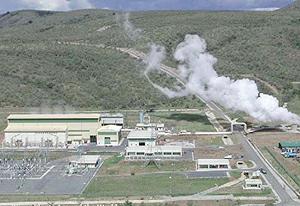
根據聯合國環境規劃署在2008年底的評價,金融風暴和氣候變遷造成的天災所造成的生命損失,使得2008年成為有史以來最具破壞力的一年。
熱帶氣旋納吉斯在2008年6月於緬甸境內奪走7萬8千條人命。大西洋的颶風季節在加勒比海、中美洲,和美國境內造成浩劫。
世界最大的再保險公司─慕尼黑再保險,和聯合國環境規劃署金融倡議機構合夥人估計,與天氣有關的大災難於2008年耗費約2千億美元,是2007 年損失的兩倍以上。
氣候異常,包括毀滅性的洪水、嚴重的乾旱、暴風雪、熱浪和強烈冷氣團替2008年寫下註解。 北極的冰體體積降到了有史以來第2低的水準。
在2008年稍早,聯合國環境規劃署執行長史坦納(Achim Steiner)說,「我們所目睹的極端天氣事件正強調人類對自然災害的不可抗性,如果氣候變遷未被查覺,則科學家預言這種不可抵抗性將會增加。」
變化中的氣候

2009年12月將於哥本哈根舉行的年度聯合國氣候會議,各國政府預料將同意一項限制氣候溫室氣體排放的條約,以銜接將於2012年終止的京都議定書。
聯合國環境規劃署正號召聯合國各機構,各國政府,社群團體,企業和產業界,藉由支持這項於2012年後針對氣候變遷的決定性協議來聯合對抗氣候變遷。
這項聯合對抗氣候變化的活動可望促使世界領導人在哥本哈根會談期間達成概括性、綜合性,受認可的約定。
各國必須同意減少其排放量的模式,並且透過推動再生能源、促進環保技術投資、保護大自然的自然碳匯量,以及替產業和企業界訂定明確的排放上限等方式,來對抗氣候變遷。
工業化與新興的經濟體預料將採取行動降低溫室氣體排放量,並提供融資機制予對氣候暖化欠缺抵抗性的經濟體和社群。
京都議定書的「清潔發展機制」(Clean Development Mechanism,CDM),允許已開發國家在京都議定書規範下,藉由提供開發中國家工程所需資金,來抵銷關於其排放量的部份限制。
雖然大家普遍認為這個機制需要加以強化,以便在所需規模下執行,該機制正以對抗氣候變遷的關鍵手段,以及協助發展中國家經濟的創意刺激的形式興起。
關注降低森林消退導致的碳排放
多達20%的溫室氣體排放物起因於森林砍伐。但是迄今只有0.7%的森林藉由登記造林和再生林對「清潔發展機制」工程做出少許貢獻。
在2008年9月,聯合國發起了「降低森林消退導致的碳排放」(REDD)計畫,其目的是利用森林永續管理來達成經濟上的平衡。
如果「降低森林消退導致的碳排放」計畫在2012年後的氣候協議中通過,已開發國家將支付發展中國家,以取得因改進特定熱帶森林管理方式所節省的溫室氣體排放量。
與眾不同的商業機會
全球市場依舊努力應付信貸危機,這個後世永難忘懷的2008年大災難所帶來的後果。
為了面對經濟崩解和全球暖化的挑戰,聯合國在2008年提倡綠色新政 - 一個由聯合國領導的行動,尋求動員和重新聚焦全球經濟,使其轉向對潔淨技術、可再生能源和自然的基礎設施的投資,以對抗氣候變遷,並啟動環保工作榮景。
綠色新政和綠色經濟行動標誌著聯合國環境規劃署戮力加強環境和經濟彼此關係的新章節。
倡議再生能源

全球經濟的創新和綠化在2008年都已發生,包括數十億美元可再生能源發展和成長中的碳交易市場。
在2008年,即使信貸危機正開始擾亂金融市場,全球超過1,480億美元的新資金投資在永續能源部門,較2006年增加約60%。
利用全球環境基金提供資金,聯合國環境規劃署和世界銀行發起非洲裂縫地熱基金。這1,800萬美元的計畫用於承保鑽探熱氣的風險,並藉此增加私人企業建造地熱發電廠的信心。
聯合國環境規劃署和全球環境基金的太陽和風資源評估已鑑定1千萬兆瓦太陽和風力能源,以供26個開發中國家的私人企業開發。
來自全球環境基金聯合國基金2千萬美元支援,聯合國環境規劃署正與亞洲和非洲開發銀行合作,促使私人企業的資金流向潔淨能源相關企業。
一方面,生質燃料減少溫室氣體排放量和減輕氣候變遷的潛能,使得生質燃料的永續性擁有全球重要性。而另一方面,對於生質燃料造成全球糧食危機的疑慮也在2008年升高。
永續生質燃料圓桌會議已草擬原則和標準,目前正開放6個月徵求大眾的意見。
聯合國環境規劃署和合夥人於2009年發行的一個全球可再生能源保險基金將帶來大範圍創新保險和風險管理產品,以幫助再生能源和潔淨能源在開發中經濟體的發展。
邁向氣候平衡
氣候平衡概念正在全世界流行。氣候平衡指的是一種不會產生溫室氣體排放物淨排放的生活模式,這可透過降低排放量來達成,並使用碳補償機制來平衡不可避免的碳排放。
聯合國環境規劃署的「氣候平衡網絡」計畫(CN Net),正逐漸發展成網路和最佳實行的分享平台,促進低碳社會的形成。
「氣候平衡網絡」參與者已設定當今世上最積極地溫室氣體減量目標。例如,哥斯大黎加預定在2021年,其慶祝獨立200周年時,達到氣候中立的目標。冰島則有全世界最高的再生能源使用率。
10億顆樹活動
聯合國環境規劃署的十億棵樹運動正不斷壯大。超過43億棵樹已經認養,25.9億棵樹已種植在161個國家。70億棵樹將在2009年底前種植─這個運動的新目標,並將一路超前直到2009年底舉行的哥本哈根氣候會議。
這個擴及全世界的運動鼓勵人們、社區、企業與產業界、公民組織,和政府,進入樹木種植線上認養,以進一步進行個人或集體的行動。
環保與運動
運動和環保行動正產生一個環境行動和意識的新浪潮。
在北京,太陽能用於奧運村草坪、院子,和街道的照明;回收利用的水則用於加熱和冷卻系統; 3000立方米的雨水予以回收利用。那些組織幹部設定一個50%回收廢棄物的目標,包括紙、金屬,和塑膠製品。
聯合國環境規劃署已被要求在2010年溫哥華冬季奧林匹克運動會、2014年俄羅斯黑海的索契冬季奧林匹克運動會,以及2010年南非世界杯準備工作中,扮演類似的角色。
Financial damage and loss of life caused by climate-related natural disasters made 2008 one of the most devastating years on record, according to the United Nations Environment Programme's year-end assessment.
Cyclone Nargis last June claimed 78,000 lives in Myanmar. The Atlantic hurricane season wreaked havoc in the Caribbean, Central America and the United States.
Costs associated with weather-related catastrophes are estimated by Munich Re, the world's biggest reinsurer and UNEP Finance Initiative partner, at about $200 billion in 2008 - double the losses incurred in 2007.
Climate extremes, including devastating floods, severe droughts, snow storms, heat waves and cold waves marked the year.
Ice volume in the Arctic dropped to its second-lowest level on record.
Earlier in the year, UNEP Executive Director Achim Steiner said, "The extreme weather events we are witnessing underline the increasing vulnerability of humankind to natural disasters - vulnerability that scientists predict will rise if climate change is left unchecked."
A Climate for Change
At the annual UN climate conference set for Copenhagen in December 2009, governments are expected to agree on a treaty to limit climate warming greenhouse gas emissions to follow the Kyoto Protocol which expires in 2012.
UNEP is calling on UN agencies, governments, civil society, businesses and industries to unite to combat climate change by supporting the call for a post-2012 definitive agreement on climate change.
The UNite to Combat Climate Change campaign urges world leaders to reach an inclusive, comprehensive and ratifiable deal during the Copenhagen talks.
Countries must agree on ways to cut their emissions and work together to fight climate change by boosting renewable energy, promoting investments in green technologies, conserving nature's natural carbon sinks and setting clear emission caps for industry and business.
Industrialized and emerging economies are expected to take action towards reducing their greenhouse emissions and to provide funding mechanisms to climate-proof vulnerable economies and communities.
The Kyoto Protocol's Clean Development Mechanism, CDM, allows developed countries with legally-binding targets under the Kyoto Protocol to offset some of their emissions by funding projects in developing countries.
The mechanism is emerging as a key instrument for combating climate change and a creative stimulus package to developing country economies, although it is widely agreed the mechanism needs to be made more robust in order for it to perform on the required scale.
Seeing REDD
Up to 20 percent of greenhouse gas emissions result from deforestation. But forests have, so far, made a small contribution to CDM projects with only 0.7 percent registered for afforestation and reforestation.
In September 2008 the United Nations launched the Reduced Emissions from Deforestation and Forest Degradation, or REDD, program, which aims to tip the economic balance in favor of the sustainable management of forests.
If REDD gets the green light in a post-2012 climate agreement, developed countries may be able to pay developing ones for the emissions saved from improved management of particular tropical forests.
Business Un-usual
Global markets are still trying to cope with the aftermath of the credit crunch, the single catastrophe for which 2008 will be remembered for generations to come.
To face up to the challenges of economic meltdown and global warming, the UN called in 2008 for a Global Green New Deal - a UN-led initiative that seeks to mobilize and refocus the global economy towards investment in clean technologies, renewable energy and natural infrastructure to combat climate change and trigger a green employment boom.
The Green New Deal and the Green Economy Initiative signal a new chapter in UNEP's efforts to strengthen work on the interface between environment and economy.
Energizing Renewables
Innovation and greening of the global economy both took place in 2008, including a multi-billion dollar boom in renewable energy development and the growing carbon markets.
Over $148 billion in new funding entered the sustainable energy sector globally last year, up 60 percent from 2006, even as a credit crunch began to upset financial markets.
With funding from the Global Environment Facility, UNEP and the World Bank launched the African Rift Geothermal Facility. The $18 million project is underwriting the risks of drilling for steam and in doing so building the confidence of the private sector to build geothermal power stations.
UNEP and the GEF's Solar and Wind Resource Assessment have identified 10 million megawatts of solar and wind energy in 26 developing countries available for private sector development.
With $20 million in GEF and UN Foundation support, UNEP is working with the Asian and African Development Banks to leverage private sector financial flows towards clean energy entrepreneurs.
The sustainability of biofuels has assumed global significance given, on the one hand, the potential of biofuels to contribute to greenhouse gas emission reduction and climate change mitigation, and on the other, the concerns raised in 2008 about biofuel production's impact on the global food crisis.
The Roundtable on Sustainable Biofuels has produced draft principles and criteria, currently open to a six month public comment period.
A Global Renewable Energy Insurance Facility planned for launch by UNEP and partners in 2009 is set to bring a wide range of innovative insurance and risk management products to assist the growth of renewables and clean energy in developing economies.
Towards Climate Neutrality
Climate neutrality is catching on around the world.
Climate neutrality means living in a way which produces no net greenhouse gas emissions, achievable by reducing emissions, and using carbon offsets to neutralize the remaining emissions.
UNEP's Climate Neutral Network, CN Net, is growing into a platform for networking and the sharing of best practice, energizing progress towards a low carbon society.
CN Net participants have set the most ambitious greenhouse gas reduction targets in the world. For example, Costa Rica aims to be climate neutral by 2021 when it celebrates 200 years of independence, and Iceland has the world's highest rate of renewable energy use.
The Billion Tree Campaign
UNEP's Billion Tree Campaign is moving from strength to strength. More than 4.3 billion trees have already been pledged and 2.59 billion have been planted in 161 countries.
Seven billion trees - to be planted by the end of 2009 - is the new target set by the campaign in the lead up to the Copenhagen climate conference.
The worldwide campaign encourages people, communities, business and industry, civil society organizations and governments to enter tree planting pledges online in a call to further individual and collective action.
Green Sports
The Sport and Environment initiative is spawning a new wave of environmental action and awareness.
In Beijing, solar power was used to light the lawns, courtyards and streets at the Olympic village; reclaimed water was used for heating and cooling systems; and 3000 cubic metres of rainwater was captured and used. The organizers set a target of achieving a 50 percent recycling of waste including paper, metal, and plastics at the venues.
UNEP has been asked to play a similar role for the Vancouver Winter Olympic Games in 2010, the Sochi Winter Olympics in 2014 on Russia's Black Sea coast, and for South Africa in preparation for World Cup 2010.


